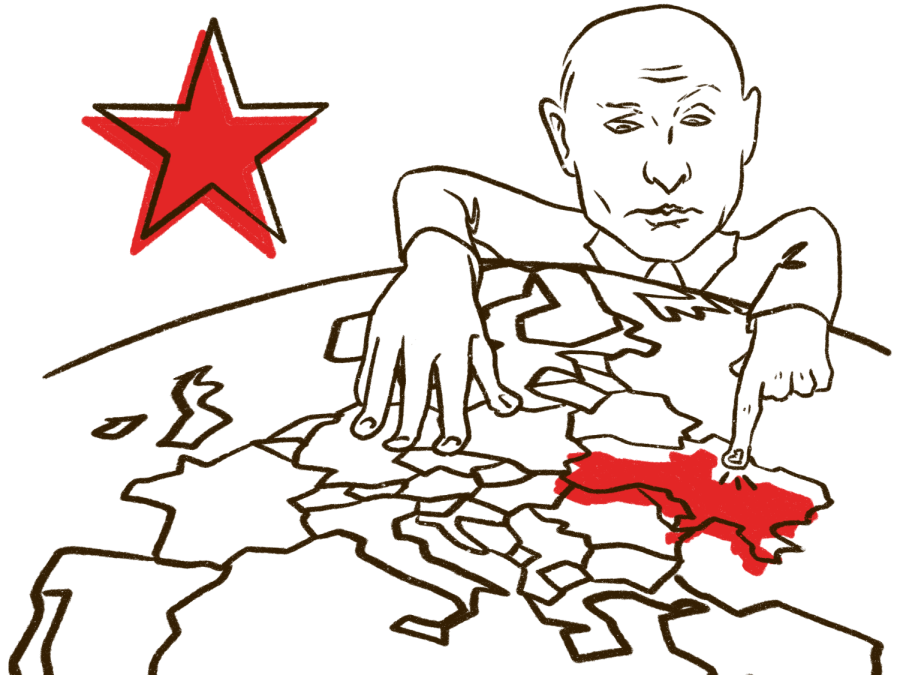Fears of War Rose as Russia Deployed Troops to the Ukrainian Border
March 8, 2022
Russia has amassed over 100,000 troops on the Ukrainian border, Ukrainian websites have been hacked, and there are rumors of a planned Russian coup against the Ukrainian government. Will a new major war finally come to Eastern Europe?
The Russo-Ukrainian conflict is now eight years old. After the 2014 Euromaidan protests ousted Ukraine’s Russian-supported president, Viktor Yanukovych, Russia annexed Crimea (a region mainly populated by Russians) and sent troops without insignia to assist separatists stirring civil war in the Donbas region. According to Radio Liberty and the UN, over 13,000 have died and 2,300,000 have been displaced–all without official Russian forces setting foot on Ukrainian soil. However, this might change.
According to France 24, almost 100,000 troops with heavy weaponry assembled on the Russo-Ukrainian border in October. Satellite images show troops grouped into armies, positioned for an assault. Ukraine responded by deploying its own military to the border. This standoff began to spiral as both sides continued to pour troops into the region. On November 26th, Ukrainian President Volodymyr Zelensky claimed to receive “information that a coup d’etat will take place” involving prominent Russians.
The international community, awakened to the danger of a major European war, demanded that the two sides resolve the crisis diplomatically. Russia turned its attention to the West, sending two draft treaties to NATO and the United States on December 17th. The treaties stated that Russia would not invade Ukraine if NATO agreed to withdraw troops from former Soviet Republics, end its eastward expansion, and remove all nuclear weapons from countries near Russia. This was unlikely to happen, suggesting that the treaties were designed to fail, providing a pretext for war.
NATO rejected the demands and tensions continued to rise. On January 19th, President Biden declared that an invasion would result in sanctions. As [History] Teacher Mr. Montgomery of CRLS points out, “Previous sanctions or threats of sanctions did not deter Putin or the Russian military from annexing a significant portion of the sovereign nation of Ukraine.” When asked by a reporter why sanctions would work now, President Biden responded, “He’s never seen sanctions like the ones I promised will be imposed if he moves.” Accoring to Bloomberg, Biden and the EU later specified that sanctions could include cutting Russia’s access to the Swift financial network, bans on lending to Russian businesses, travel bans for government officials, asset freezes, and export bans.
Despite pressures from the United States and NATO, Russia has not moved away from the border. In fact, Russia recently stationed troops in Belarus—only miles away from Kyiv, the capital city of Ukraine—according to The Hill. British intelligence claims to have acquired evidence that Russia has plotted another coup which would replace Zelensky with pro-Russian president. According to Putin, “Russia’s principal [security] concerns were ignored” by the West, and he continues to play hardball because of this. No one knows what will happen next. There could be war, a coup, cyber warfare, or nothing at all. Only time will tell whether Putin will be successful in his intentions—whatever they may be.
Since this article was written, Russian troops have invaded Ukraine, and the situation continues to develop.
This piece also appears in our February 2022 print edition.










